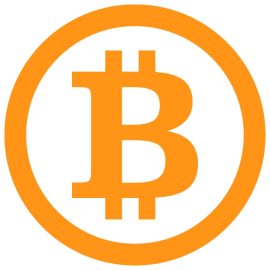- sample pros
- sample pros
- sample pros
- sample pros
- sample pros
- sample pros
A Brief Overview of Bitcoin
Bitcoin is the world’s first cryptocurrency and its birth brought a massive revolution. An anonymous person created the crypto in 2009. Some believe that the inventor of this virtual currency is a person named Satoshi Nakamoto.
Today, it has become popular as a king in the crypto world. Its popularity has inspired the development of many other cryptocurrencies. These competitors are either trying to replace it as a payment system or additional security tokens in other blockchain and emerging financial technologies.
Bitcoin (BTC for short) is a decentralized currency sent peer-to-peer through the Bitcoin network without an intermediary. A network cryptographically verified transactions and recorded in public distributed ledger called a blockchain.
All users connected to the Bitcoin network are nodes. In the network, each node is connected to multiple nodes. The sender node generates a transfer request and signs it with its private key to transfer funds. This request is then sent to all connected nodes.
Main Takeaways
- Created in 2009, Bitcoin is the world’s largest cryptocurrency in terms of market capitalization.
- Bitcoin is a digital asset that uses a decentralized ledger system called blockchain to be created, distributed, traded, and stored.
- Proof of Work (PoW) consensus secures Bitcoin and its ledger and introduces new Bitcoins into the system.
- Bitcoin is available on numerous cryptocurrency exchanges.
- As the first decentralized virtual currency that gained widespread popularity and success, it inspired many other cryptocurrencies.

Who invented Bitcoin?
Satoshi Nakamoto is the person(s) behind the creation of the first Bitcoin software and the article that first introduced the concept of crypto to the world. Nakamoto was active in Bitcoin and blockchain development until 2010. The last communication with Satoshi was in an email to another cryptocurrency developer stating that they had moved on to other things.
Satoshi Nakamoto was one of many who came up with cryptocurrencies. Still, he was the one who solved a major problem holding back their adoption: Unlike paper currency, cryptocurrencies can replicate.
The problem was double spending, which Satoshi Nakamoto solved it. Nakamoto offers a decentralized transaction approach using ledgers, networks, Merkle roots and trees, timestamps, incentives, cryptography, and consensus mechanisms.
In a blockchain, timestamps add to transaction information and cryptographic techniques use to encrypt the data. Encrypted data cannot be changed and must be verified. The network needs to verify the authenticity of the transactions based on a majority consensus mechanism called proof of work.
Analysis of the Bitcoin blockchain helps to determine with a relatively high degree of certainty which addresses are most likely Satoshi Nakamoto.
According to chain analysis by RSK Labs Chief Scientist Sergio Demián Lerner, Satoshi holds approximately 1 million Bitcoin. These addresses date back to Bitcoin’s inception in 2008.
Although the identity of Satoshi Nakamoto is still unknown, the value of Bitcoin owned by Satoshi Nakamoto is around 1 million, which is an imposing figure.
Moreover, given that the maximum possible number of bitcoins produced is 21 million, Satoshi’s 5% share of the total number of bitcoins significantly influences the market.
How does it work?
Bitcoin is a digital currency designed to transfer assets without intermediaries. In other words, Bitcoin is a decentralized system where ordinary people manage the production and distribution of coins.
Many cryptographic technologies and economic concepts have contributed to the creation of the Bitcoin system. Blockchain is the leading technology behind Bitcoin.
Many of the positive attributes considered for the digital asset are linked to this technology, which is also found in other systems. Blockchain is a database that aims to record information in a decentralized manner.
How to buy Bitcoin?
After learning about the king of cryptocurrencies, the next step is to know how to buy Bitcoin.
As you know, Bitcoin has no physical form; its format is digital. Therefore, buying Bitcoin is done through the Internet. The safest way to buy Bitcoin is to visit a cryptocurrency exchange website.
However, due to Bitcoin’s semi-anonymous transactions, it is risky to buy this currency through social networks and unknown persons.
Buying Bitcoin from exchanges

To buy Bitcoin from an exchange, follow the following simple steps:
- Installing a wallet
- Finding a valid exchange
- Implementing authentication procedures with identity documents
Competitors
Every day, new coins and tokens enter the digital currency market, and if we look at the matter as a whole, all of these currencies and tokens are Bitcoin’s competitors to some extent.
However, can these new tokens and coins compete with Bitcoin and later take its place? Many people in the cryptocurrency market believe that Bitcoin, like other currencies, will one day fall from the top of digital currencies and another currency will take its place.
Conversely, others believe that bitcoin will maintain its status as the top digital currency for at least a few years.
Current competitors
To learn about Bitcoin’s competitors, we need to see which currencies are most supported by cryptocurrency market activists. To do this, look at the list of currencies on sites like CoinMarketCap and see which of those currencies is at the top of the chart. If we examine the table, we will see that the main competitors of Bitcoin are as follows:
- Ethereum
Ethereum is the second most popular currency in the cryptocurrency market and accounts for many daily transactions. In addition, the currency is the first blockchain that works on smart contracts. Currently, Ethereum has a faster transaction speed than Bitcoin, which is one reason why the currency is known as a competitor to Bitcoin.
- Bitcoin Cash
As we mentioned earlier, many people have criticized Bitcoin for its slow transaction speed. Bitcoin Cash, which was initially part of the Bitcoin blockchain, was later separated from Bitcoin as a hard fork to address this issue. Due to the high transaction speed of Bitcoin Cash, this currency can replace Bitcoin for financial transfers.
- Cardano
You may have heard the name of this currency less than other coins, but this currency is known as one of the most promising ones. Many believe that Cardano is an excellent alternative to Bitcoin due to the fact that it is entirely open source.
- Litecoin
Litecoin is an open-source payment network that is currently very popular among cryptocurrency activists. Many people believe that Litecoin has many uses in the field of payment.
How many Bitcoins are in circulation?
Since its inception at the end of 2009, the figures for this cryptocurrency have gradually increased. However, at first glance, the number of bitcoins currently in existence has remained relatively high due to the price increases of 2017 and 2020.
On average, 144 blocks are mined daily, and there are 6.25 bitcoins per block. 144 x 6.25 is 900. Therefore, This is the average number of new bitcoins mined each day.
As many miners add new hashing power, the interval between block discoveries has been typically 9.5 minutes instead of 10 minutes in recent years. Due to the faster creation rate, more than 900 new bitcoins are actually created on most days.
Bitcoin price statistics
The currency, the market leader in terms of volume and value, has witnessed many ups and downs in its price trend since its inception. Since 2009, Bitcoin has inspired many other currencies, so the number of cryptocurrencies that can be bought and sold in centralized and decentralized exchanges has reached more than 10,000.
Despite many challenges facing Bitcoin between 2010 and 2022, the technology offered by Bitcoin was so powerful and had many advantages that the number of companies accepting it as a payment method increased.
The price of cryptocurrencies constantly fluctuates. The rise in Bitcoin prices affects all altcoins and other types of currencies. The price of Bitcoin was close to zero in 2009, and its appreciation officially started in 2010 at fewer than 5 cents.
What are the advantages of Bitcoin over fiat currency and the traditional banking system?
Bitcoin fans attribute several advantages to this system. One of the main advantages is the use of blockchain for tracking financial transactions related to smart transactions and its automatic execution under exceptional circumstances. However, one of the main benefits everyone agrees on is that Bitcoin is a decentralized currency independent of any financial institution or banking system.
Bitcoin payment and transaction processes are visible but cannot be stopped. This differs significantly from traditional banking methods. In conventional banking systems, it is possible to interfere in the transfer process, and the account may be blocked due to regulations, tax collection, and money laundering. Fiat is a currency designated by governments and central banks as legal tender.
Although Fiat is government-sponsored, it has no valuable backing. Unlike Fiat, whose supply and value are unpredictable, Satoshi has developed a currency system in which the amount is fixed, pre-determined, and immutable.

Weaknesses and challenges
Bitcoin’s significant weaknesses are price volatility, cyber-attacks, transaction speed, and user anonymity. In the following, we will look at each of them in detail.
Cyber-attack: Hackers and cyber-attacks can use Bitcoin as an extortion tool and demand ransom from victims.
The use of Bitcoin makes it difficult to track down and arrest these people. The zero-day attack is one of the most scathing attacks to weaken Bitcoin.
This attack exploits potential security vulnerabilities.
Transaction speed: One of the main disadvantages of the currency is the low speed of transactions and it is time-consuming, so each transaction lasts about 10 minutes.
Price volatility: Due to the emergence of the cryptocurrency market, external factors strongly influence the price fluctuations of currencies in the market, such as Bitcoin. This volatility has resulted in many gains and losses for cryptocurrency activists.
User anonymity: User anonymity can lead to using Bitcoin for illegal purposes like tax evasion, the export of weapons, gambling, and breaking laws.
As previously mentioned, despite the fact that this system is more transparent than traditional currencies, numerous instances of illegal use have been documented recently.
Still in development: Bitcoin software has bugs that are being fixed. In addition, new features, tools, and services will be created to make Bitcoin more secure and user-friendly.
However, some of these innovations still need to be tested and available to everyone. In addition, most startups are new in this field, and there is no guarantee to use them.
What Does the Future Hold for Bitcoin?
Since its launch, Bitcoin has gained popularity, and this trend will likely continue. However, if we look at the Bitcoin price trend over the last few years, it has actually remained within a specific range of fluctuations.
Some cryptocurrency experts believe that Bitcoin is still new and, therefore, its price fluctuation is normal. Indeed, predicting Bitcoin prices for the next 5, 10, or 50 years is challenging.
This uncertainty makes Bitcoin tracking incredibly exciting. Bitcoin is a phenomenon about which one can imagine the strangest dreams. Dreams whose fulfilment is not guaranteed.
The bottom line
In recent years, there has been a lot of interest in Bitcoin and other well-known cryptocurrencies.
Known worldwide as a digital and virtual currency, Bitcoin is mined and traded within the blockchain system. Since the launch of Bitcoin in 2009, cryptocurrencies have grown dramatically, revolutionizing the market. With that in mind, we decided to cover the basics of the Bitcoin network.
We also explain the currency’s basic process, challenges, and weaknesses. Please note that the information provided in this article is for educational and informational purposes only.
All actions taken by readers based on the information provided in our articles are entirely at their own risk.
Sources:

